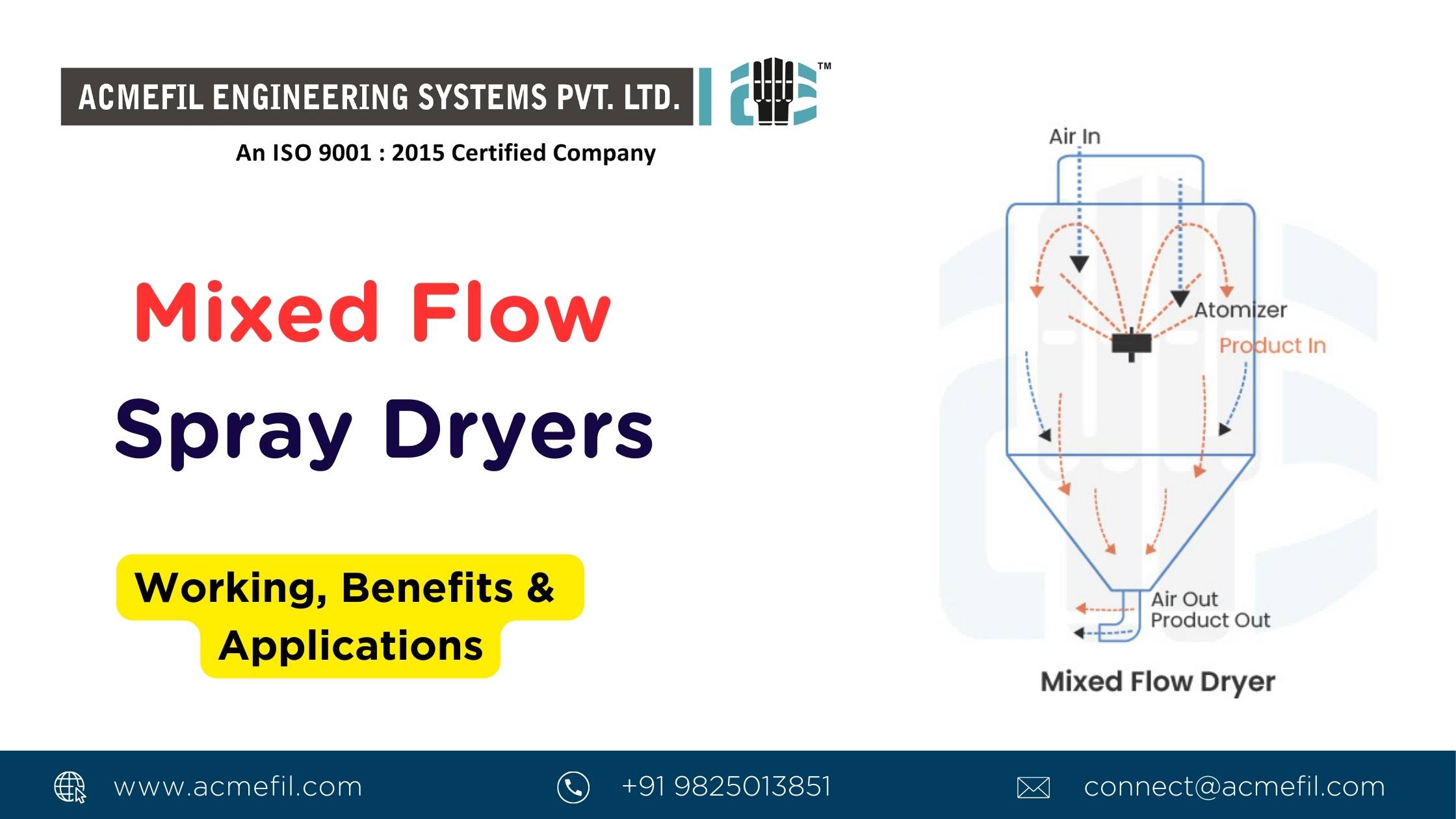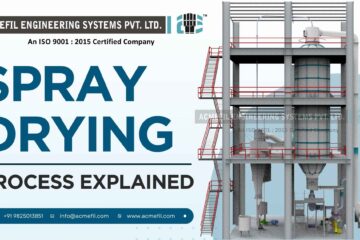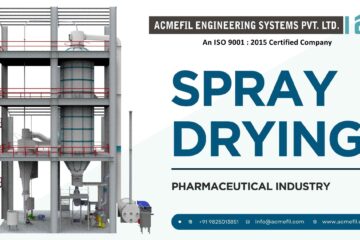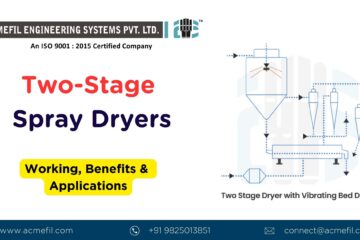Spray drying has become an essential industrial process, offering efficient and versatile solutions for converting liquid feed into powdered products. One of the innovative designs in this space is the Mixed Flow Spray Dryer, which combines the best of co-current and counter-current flow designs to provide enhanced drying capabilities.
This blog explores:
- What a Mixed Flow Spray Dryer is and how it works.
- Key benefits that set it apart.
- Industrial applications where it excels.
- Expert tips for maximizing efficiency.
Let’s dive in to understand why Mixed Flow Spray Dryers are gaining traction across industries.
What is a Mixed Flow Spray Dryer?
A Mixed Flow Spray Dryer integrates the principles of both co-current and counter-current flow designs. In this setup, air enters the drying chamber from the top, while the atomizer is positioned at the bottom. This arrangement allows particles to experience both high and low-temperature zones during drying.
While the design is not ideal for heat-sensitive products, it delivers robust drying for materials requiring thorough moisture removal.
How Does a Mixed Flow Spray Dryer Work?
- Feed Introduction: Liquid feedstock is atomized into fine droplets using a bottom-positioned atomizer.
- Air Inflow: Heated air is introduced at the top of the chamber, moving downward.
- Drying Process: Particles encounter varying temperature zones as they interact with both co-current and counter-current airflows, ensuring even drying.
- Separation: Dried particles are collected at the bottom of the chamber, while exhaust air exits through filtration systems.
This dual-flow mechanism ensures effective drying, especially for materials that need controlled exposure to temperature gradients.
Key Benefits of Mixed Flow Spray Dryers
1. Enhanced Moisture Control
The combination of co-current and counter-current flows enables precise control over the drying process, making it ideal for products that require gradual moisture removal.
2. Energy Efficiency
By utilizing both flow mechanisms, the dryer maximizes energy transfer, reducing overall operational costs.
3. Versatility
This design can handle a wide range of feedstocks, including slurries, solutions, and viscous liquids.
4. Uniform Particle Quality
The exposure to varying temperature zones ensures consistent particle size and quality, even for challenging materials.
5. Durability for Tough Materials
The robust design allows the dryer to handle abrasive and heavy-duty materials without compromising efficiency.
Applications of Mixed Flow Spray Dryers
Mixed Flow Spray Dryers are widely adopted in industries requiring efficient and durable drying solutions.
1. Chemical Industry
- Drying of fertilizers, catalysts, and pigments.
- Ensures uniform composition and stability.
2. Food Processing
- Suitable for non-heat-sensitive ingredients like starches, salts, and flavorings.
- Produces consistent and fine powders for use in packaged goods.
3. Pharmaceutical Sector
- Drying of robust APIs and excipients.
- Delivers uniform particle sizes for improved bioavailability.
4. Construction Materials
- Effective for drying cement powders, silica, and gypsum.
- Produces high-quality particles for construction and manufacturing.
5. Industrial Minerals
- Ideal for drying abrasives like clay, lime, and alumina.
- Provides precise particle size control for enhanced usability.
Expert Tips for Optimizing Mixed Flow Spray Dryers
- Monitor Feed Characteristics
Ensure feed viscosity and temperature are within optimal ranges to achieve uniform drying. - Optimize Airflow
Regularly adjust air inlet temperatures to balance drying speed and product quality. - Maintain Atomizer Efficiency
Clean and calibrate atomizers frequently to prevent clogging and ensure consistent spray patterns. - Use Advanced Separation Systems
Invest in high-quality cyclones and bag filters to maximize powder recovery. - Schedule Regular Maintenance
Inspect key components, such as nozzles, chambers, and exhaust systems, to maintain efficiency and prevent downtime.
Mixed Flow Spray Dryers vs. Other Designs
| Feature | Mixed Flow | Co-Current Flow | Counter-Current Flow |
|---|---|---|---|
| Direction of Air and Spray | Both co-current and counter | Same | Opposite |
| Ideal For | Gradual moisture removal | Heat-sensitive products | Non-heat-sensitive products |
| Energy Efficiency | High | Moderate | High |
| Applications | Chemicals, food, pharmaceuticals | Food, dairy | Chemicals, construction materials |
Why Choose Mixed Flow Spray Dryers?
Mixed Flow Spray Dryers stand out for their ability to balance efficiency and performance. By leveraging the strengths of both co-current and counter-current flows, they deliver consistent results for challenging industrial applications. Whether you’re handling robust chemicals or non-heat-sensitive food ingredients, these dryers offer a reliable and cost-effective solution.
Conclusion
The Mixed Flow Spray Dryer is a versatile and efficient drying solution for industries requiring precise moisture control and high durability. Its unique design ensures consistent particle quality and optimal energy use, making it a preferred choice for many industrial applications.
Acmefil Engineering Systems Pvt. Ltd. is a trusted leader in manufacturing world-class spray drying solutions tailored to meet diverse industrial needs. With over two decades of expertise, we specialize in designing and delivering high-performance spray dryers that ensure efficiency, precision, and unmatched quality. Serving industries like food, pharmaceuticals, and chemicals, Acmefil stands out for its innovative designs, cutting-edge technology, and commitment to excellence. Backed by ISO 9001:2015 certification and a team of skilled engineers, we are the go-to partner for businesses seeking reliable, customized, and energy-efficient spray drying systems. At Acmefil, we don’t just build spray dryers; we empower industries with solutions that redefine standards.




